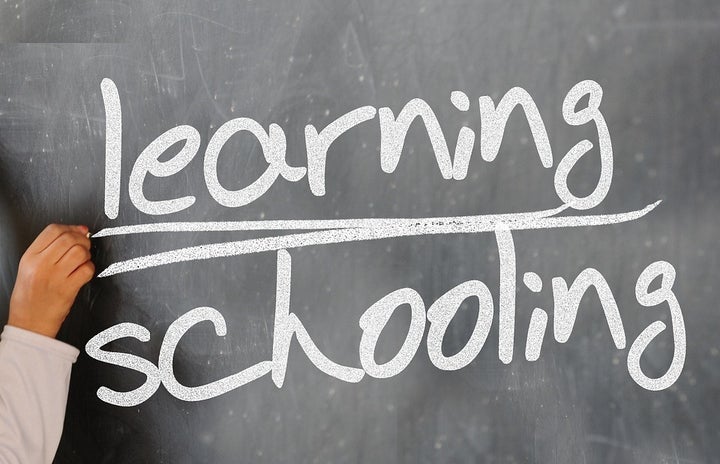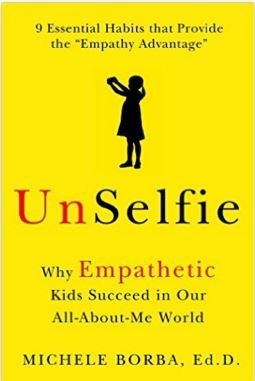
What can your child learn from building a wall?
We are living in very challenging times, not only politically, but educationally as well.
This became immensely clear at a recent conference I attended at the Harvard School of Education, during a session focused on the challenges schools face today following a very divisive election.
What can we learn from a wall.
In an interesting case study, Harvard Professor of Education, Meira Levison led us through a scenario that I'm confident many schools across our country have experienced.
Let's review her story:
A veteran first-grade teacher was faced with an incident in which a small group of boys began building a wall that spanned the width of the classroom. The teacher initially thought nothing of it--until the chanting started, “Build the wall!, Build the wall!”
The teacher could see that some of her students were feeling uncomfortable, so she immediately called a timeout. She normally didn't like to interfere with children's play, she believes they need the freedom to explore, problem-solve and negotiate differences on their own, however she could feel this was something completely different.
When she asked the boys what they were working on, they responded excitedly, "We're building the wall to keep the Mexicans out!"
The teacher had to take a moment to pause and regain herself. Then she decided it was her responsibility as an educator to help the boys understand that we should embrace others rather than fear them. So instead of punishing the boys or reporting them, she decided this was her teachable moment and a big one.
She asked the entire class, "Why do some people want to keep other people out?" The students had so many interesting comments. One said they “just wanted to be alone or maybe they only wanted to be with their best friends,” another said “because you have to stay safe, and you don't know if strangers could be dangerous.” Another boy chimed in, “because the Mexicans will take our jobs!”
When the teacher asked the young boy “what is your job?,” he shrugged his shoulders.
"Your job, boys and girls, is to come to school to learn,” this teacher told her class. “And while you are at school your job is to be kind, to be caring, and to be respectful so that everyone has a safe learning space."
“The fact is no one can stop you from being kind and caring, so no one is taking your job from you,” the teacher continued.
Job # 1: To Be Kind and Caring
Richard Weissbourd, faculty director of the Making Caring Common Project at the Harvard School of Education who also presented at this event, is concerned about how we are doing teaching “caring” to young people. Their studies reveal kids (students) are more focused on success and achievement rather than kindness towards others.
That’s why engaging in this case study was so fascinating. It made us wonder, where does uncaring behavior come from? Sometimes we don't have to look very far.
If parents at home are discussing current events in an ugly way, children are likely to carry that into their own world. When mom or dad use Facebook as a venting machine rather than a place to have constructive conversations or debates, kids watch and assume this is acceptable behavior.
Do you post a mean memes? Forward or even engage in a thread of cruel comments? Remember, your kids are watching.
Being socially responsible is part parenting today. Sure, we are all entitled to our opinions, but it's how we present them that counts. Civility, caring, and kindness, no matter what side of any argument you are on, can help your points be delivered and heard.
The empathy advantage
No matter where you are, in a classroom, boardroom, or living room, when you have empathy and compassion in your heart, there is no room for cruelty.
Empathic people and children understand the needs of others. Dr. Michele Borba, author of UnSelfie, now available in paperback, provides nine essential habits that can ignite a kindness revolution and also help kids become more caring and empathetic:
1. Mentally stepping into someone's shoes is a way to build kids' empathy muscles.
2. Understanding what another thinks, feels, wants, and needs takes practice and ability.
3. Perspective taking is composed of teachable skills such as emotional literacy, managing feelings, imaging other's thoughts and feelings, solving problems and empathizing.
4. Helping kids consider others' feelings, thoughts, and needs is an effective way to boost empathy.
5. Focusing your child's attention on the effect his behavior has on another boosts perspective taking.
Takeaway tips:
- Consider all sides of a story before jumping to conclusions; Teachable moments are priceless.
- Pausing, like the teacher did, to get a clearer perspective on a situation, helps you make better decisions.
- Online choices are just as important today as offline, visit Cyberwise to equip yourself with digital literacy skills.

UnSelfie is now available in paperbook. Order today.
“Case Study excerpted from Harvard School of Education, Justice in Schools by Sara Calleja and Toni Kokenis.”
Follow me on Twitter and join me on Facebook. My new book SHAME NATION: The Global Epidemic of Online Hate (Sourcebooks) will be released October 2017.
